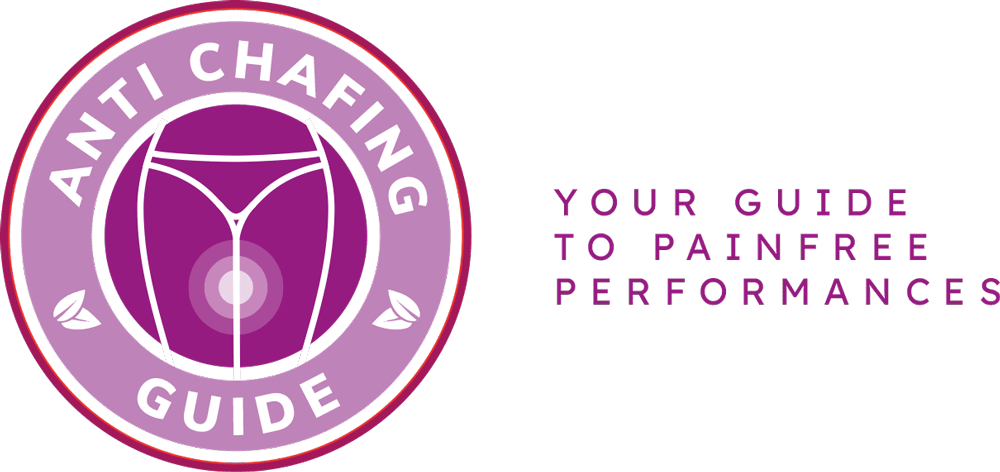Are you tired of dealing with painful skin chafing? Look no further! In this article, we will uncover expert tips from a dermatologist that will help you heal and prevent those pesky chafing sores.
Chafing sores can be a real pain, both literally and figuratively. They occur when the skin rubs against itself or clothing, causing irritation and inflammation. But fear not, because with the right knowledge and preventive measures, you can bid farewell to chafing for good.
So, what can you do to heal and prevent painful skin chafing? Let’s dive into the expert tips from our trusted dermatologist:
- Stay hydrated: Proper hydration keeps your skin moisturized and less prone to chafing.
- Choose the right clothing: Opt for breathable fabrics and avoid rough materials that can cause friction.
- Apply a protective barrier: Use a quality anti-chafing cream or petroleum jelly to create a barrier between your skin and clothing.
- Take breaks: If you’re engaging in activities that involve repetitive movements, make sure to take regular breaks to give your skin a rest.
By following these expert tips, you’ll be well on your way to healing and preventing painful skin chafing. Say goodbye to discomfort and hello to smooth, healthy skin!
Understanding Chafing Sores
Understanding Chafing Sores
Chafing sores can be a painful and uncomfortable condition that many people experience. It occurs when friction between the skin and clothing or skin-to-skin contact causes irritation and rubbing. This can lead to redness, inflammation, and the formation of sores.
There are several factors that can cause chafing sores, including excessive moisture, tight clothing, repetitive movements, and obesity. When these conditions are present, the risk of developing chafing sores increases significantly.
A dermatologist can help identify and diagnose chafing sores by examining the affected area. They will look for signs of redness, inflammation, and broken skin. In some cases, they may also perform a skin biopsy to rule out other conditions.
To effectively treat chafing sores, it is important to address the underlying cause. This may involve wearing loose-fitting clothing, using anti-chafing creams or powders, and keeping the affected area clean and dry. In severe cases, a dermatologist may prescribe medication or recommend specific treatments to promote healing.
By understanding the causes and symptoms of chafing sores, individuals can take proactive measures to prevent and treat this uncomfortable condition. Consulting with a dermatologist can provide valuable insights and guidance for managing chafing sores effectively.
Preventing Chafing Sores
When it comes to preventing chafing sores, there are several effective strategies and preventive measures that dermatologists recommend. By implementing these tips, you can avoid the development of painful skin chafing and keep your skin healthy and comfortable.
1. Keep your skin dry: Moisture can exacerbate chafing, so it’s important to keep your skin dry. After showering or sweating, make sure to thoroughly dry the areas prone to chafing. You can also use talcum powder or cornstarch to absorb excess moisture.
2. Wear moisture-wicking clothing: Choose clothing made from moisture-wicking materials, such as synthetic fabrics or natural fibers like bamboo or merino wool. These fabrics help to draw moisture away from the skin, reducing the risk of chafing.
3. Use lubricants: Applying lubricants to areas prone to chafing can help reduce friction and prevent skin irritation. Look for products specifically designed for chafing prevention, such as petroleum jelly or anti-chafing balms.
4. Opt for proper fitting clothing: Avoid tight or ill-fitting clothing that can rub against the skin and cause chafing. Instead, choose clothing that fits comfortably and allows for freedom of movement.
5. Stay hydrated: Proper hydration helps maintain healthy skin and reduces the risk of chafing. Make sure to drink plenty of water throughout the day to keep your skin hydrated from the inside out.
6. Take breaks during physical activity: If you engage in activities that involve repetitive movements or prolonged periods of friction, such as running or cycling, take regular breaks to give your skin a chance to rest and recover.
7. Protect sensitive areas: For areas prone to chafing, such as the inner thighs or underarms, consider using protective measures like bandages or specialized chafing sleeves. These can provide an extra layer of protection and reduce friction.
By following these preventive measures and incorporating them into your daily routine, you can significantly reduce the risk of developing painful skin chafing. Remember, prevention is key when it comes to maintaining healthy and comfortable skin.
Frequently Asked Questions
- What is chafing?
Chafing is a skin irritation that occurs when there is repetitive friction between the skin and clothing or skin on skin. It can cause redness, soreness, and even blisters.
- What are the common causes of chafing?
Chafing can be caused by various factors such as excessive sweating, tight or abrasive clothing, repetitive motion, and overweight or obese individuals. It commonly occurs in areas where the skin rubs against each other or against clothing, such as the inner thighs, underarms, and nipples.
- How can I prevent chafing?
To prevent chafing, it is important to keep the affected areas clean and dry. Applying a lubricant or anti-chafing balm can help reduce friction. Wearing moisture-wicking and loose-fitting clothing can also prevent chafing. Additionally, maintaining a healthy weight and staying hydrated can minimize the risk of chafing.
- How can I treat chafing sores?
If you already have chafing sores, it is crucial to keep the affected area clean and dry. Applying a soothing ointment or cream can help promote healing. Avoiding further friction and allowing the skin to rest and recover is important. If the sores are severe or show signs of infection, it is recommended to consult a dermatologist for proper treatment.
- When should I see a dermatologist?
If your chafing sores do not improve with home remedies or if they worsen or become infected, it is advisable to seek medical attention from a dermatologist. They can provide expert advice and prescribe appropriate medications to help heal your skin.


Keith is originally from Truckton, Colorado. The 54-year-old cared for his overweight wife for many years. Keitch is also a freelance editor at antichafing.net and supports the team as a competent advisor. In his spare time Keith enjoys reading books, visiting his homeland and is a passionate product tester for well-known manufacturers.

